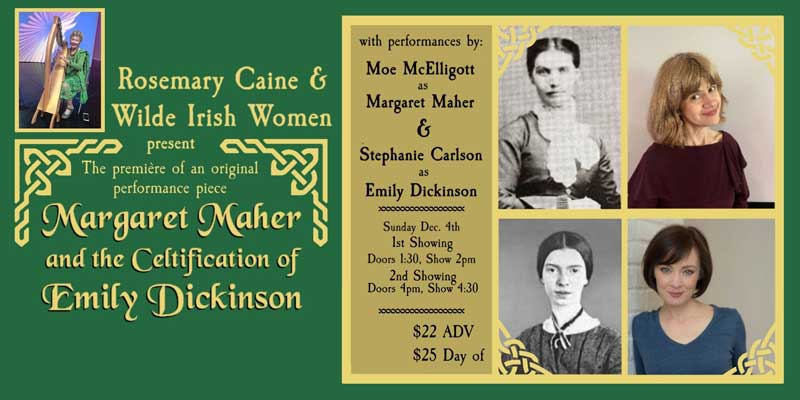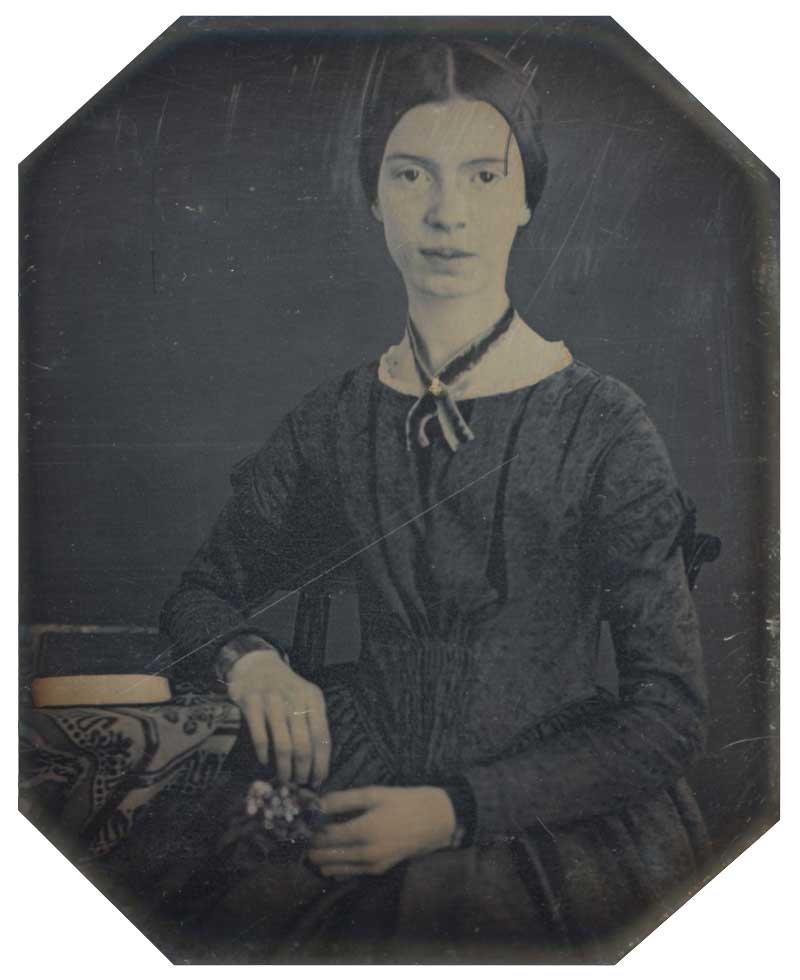New Play Spotlights Emily Dickinson’s Complex Views Toward The Irish

Source HawksandReed.com
Margaret Maher And The Celtification Of Emily Dickinson Debuts Dec. 3 In Greenfield
With the movement to rechristen Amherst to a name without genocidal associations gaining some traction, some have suggested “Dickinson” as an appropriate rebranding. Those wishing to honor the famous poet Emily Dickinson by bestowing the town with her family name may want to do a little background checking and think twice.
As playwright and former Amherst resident Rosemary Caine depicts them in her new musical play, Margaret Maher and the Celtification of Emily Dickinson, the Dickinson’s are known to have harbored anti-Irish sentiments, at times with an air approaching Lord Jeffery’s antipathy toward Native Americans.
On November 30 Caine appeared on WHMP’s The Bill Newman Show to discuss her drama that will premiere this weekend at Greenfield’s Hawks & Reed Performing Arts Center. The play revolves around Emily Dickinson’s evolving relationship with Irish immigrant Margaret Maher who worked as a domestic servant in the Dickinson home for the final seventeen years of the poet’s life.
Caine pulled much of the historical background for her play from Aife Murray’s 2010 book Maid as Muse: How Servants Changed Emily Dickinson’s Life and Language. Murray describes the poet’s father as apparently attracted to the Know-Nothing Party, an anti-immigrant and anti-Catholic national movement of the 1850s. Reflecting her Protestant parent’s prejudices, Emily wrote in an 1851 letter to her brother Austin,
“Vinnie and I say masses for poor Irish boys’ souls. So far as I am concerned I should like to have you kill some – there are so many now, there is no room for the Americans, and I can’t think of a death that would be more after my mind than scientific destruction, scholastic dissolution, there’s something lofty in it, it smacks of going up!” [Dickinson letter catalogued as JL 43]
Scholars have suggested that the twenty-year-old’s letter to her reputedly condescending older brother was meant to be amusing and sound smart, but it does not read well in the twenty-first century.
However, in history and in Caine’s play, Emily attains some redemption through her growing bond with her servant, Margaret Maher. Maher, known to the household as “Maggie,” frequently joined in baking projects with Dickinson, and dutifully served her as the poet’s health declined toward the end of her life.
Dickinson stored her finished poems in her maid’s trunk. She instructed Maher to burn the poems after her death, but in a gift to the world of letters for time to come, the servant disobeyed. She is also credited with preserving the daguerreotype believed to be the only existing photograph of the poet.
After Lavinia, the poet’s younger sister, died in 1899, Maher left the employ of the Dickinson House and moved to the home of her sister Mary and brother-in-law Tom Kelley at nearby Kelley Square. Dickinson, in a further demonstration of the importance that the Irish played in her life, had requested that Tom Kelley be chief pallbearer at her funeral. Kelley’s great-great grandson was the late Amherst journalist, blogger and Town Meeting member, Larry Kelley.
Margaret Maher and the Celtification of Emily Dickinson will be staged at Hawks & Reed Performing Arts Center in Greenfield this weekend, December 3-4. Matinees are scheduled for Saturday and Sunday at 2pm with an evening show on Saturday at 7:30pm. Call (413) 774-0150 for ticket availability.

